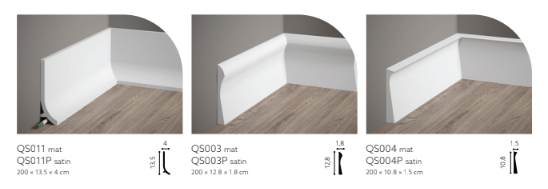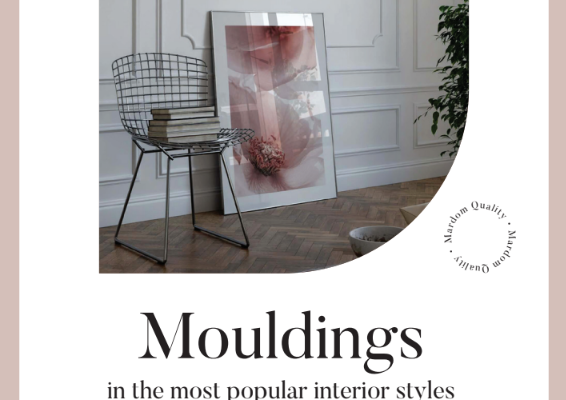In recent years, mouldings have become a leading trend in interior design. They have broken
away from all the classic patterns and are being used in a completely different, modern way.
We can now find them in almost every interior style – Modern Classic, French, Glamour,
New York, Art Deco and even Scandinavian or extremely minimalist Japan! However,
there are many technical and visual aspects to mouldings that can make them
completely transform and embellish an interior
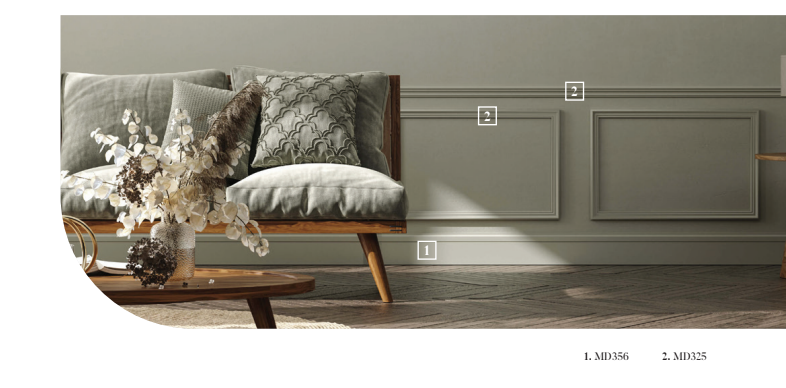
What is the practical function of mouldings?
1 – Mouldings reduce the feeling of emptiness in interiors. It makes bare, monotonous
and shapeless walls look dressed up. When we look at pictures of an interior before
mouldings were installed, and then look at the finished wall, we get the impression that
this wall could not exist without mouldings. That without them the interior was stark,
unpolished and boring, and only now has it gained all its charm and character.
2 – Mouldings create repetitive shapes and patterns on the wall, bringing rhythm,
symmetry and harmony to the interior. Walls prepared in this way form the basis for
the next steps in interior decoration. We cannot paint a picture if we have not taken
care of the canvas!
3 – Mouldings are a way of optically modelling an interior, hiding its flaws and
enhancing its assets. By knowing and skilfully applying the principles of proportion, we
can raise, lower, widen and narrow rooms. Add some play with colours and the right
arrangement of mouldings and you will be surprised at the effects you can achieve!
4 – A fourth aspect, perhaps less practical and more visual, is that certain interior styles
simply cannot exist without mouldings. Decorative profiles are an integral part of certain
architectural styles and their absence would be completely incompatible with the most
basic assumptions and canons.
Modern Classic Styles
Modern Classic is nothing more than a modern, lighter version of the classic style.
It refers to rich, palatial interiors, but uses much more subtle and less ornate forms.
Modern Classic is a very feminine style that conveys a sense of harmony, stability, order
and refined taste. In this style you will find many high quality and precious materials
such as marble, silk, velour, glass and wood. Trim elements such as handles, knobs and
small decorative details are often in shades of gold and silver, in both gloss and matt
(brushed) finishes
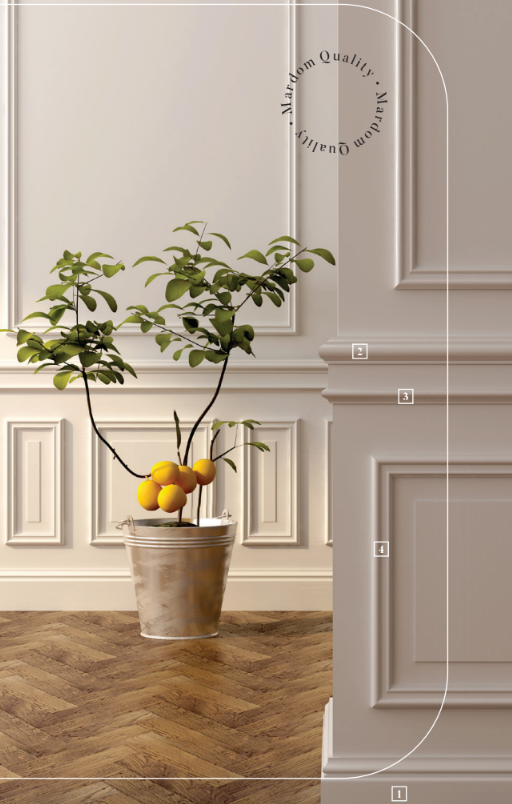
1.MD360 2.MD002 3.MD413 4.MD325
Which picture frame moulding layout to choose?
There are various frame layouts, but some are not conducive to visual modelling of the
interior. A mismatch of proportions can make a room look significantly shorter or smaller.
Here are 3 layouts that always look great in interiors!
This is a layout created using the principle of selecting the proportion of frames in a ratio of
approximately 1⁄3 to 2⁄3. This layout creates a soaring composition and makes the interior feel
taller. The lower frame should occupy about 30% of the available space and the upper frame
about 70%.
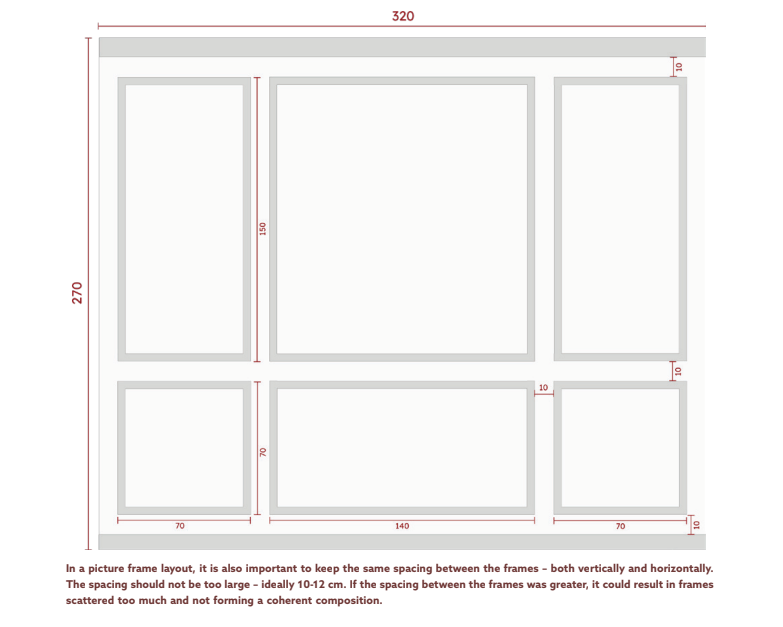
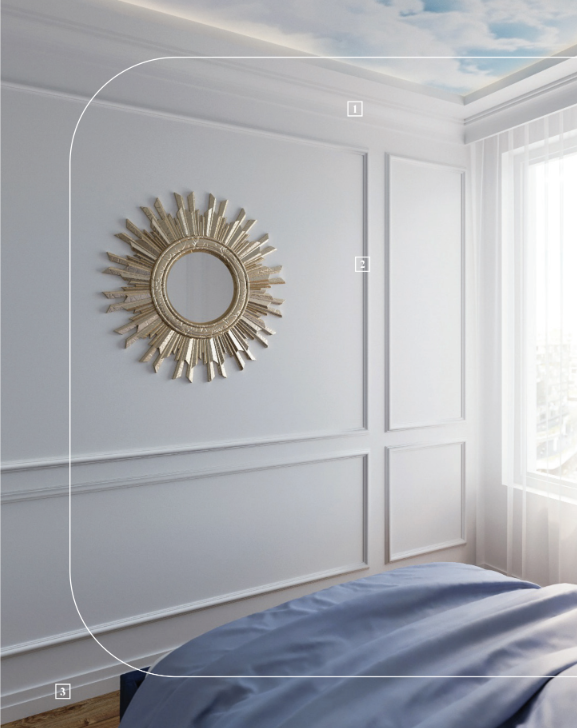
Another great-looking composition is the 1/3 layout enhanced with a chair rail separating the
lower frames from the upper frames. As with the first design, make sure that the spacing
between the elements is even. The lower frame should be approximately half the size of
the upper frame. Bear in mind, however, that any cross-cuts will visually shorten the
space slightly. If you are concerned about modelling the interior and making it
look taller, consider the first layout instead.
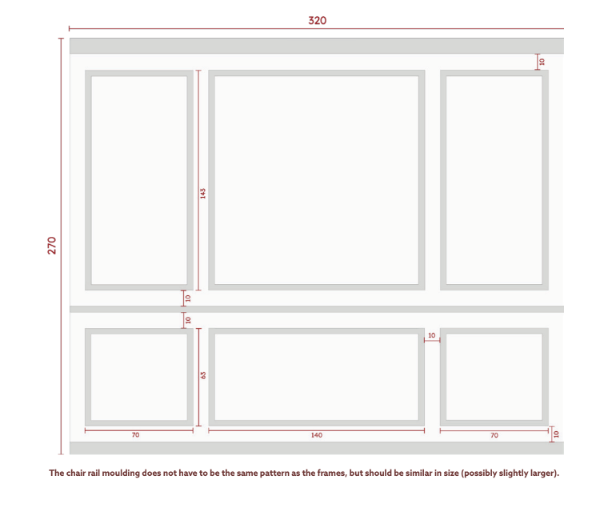
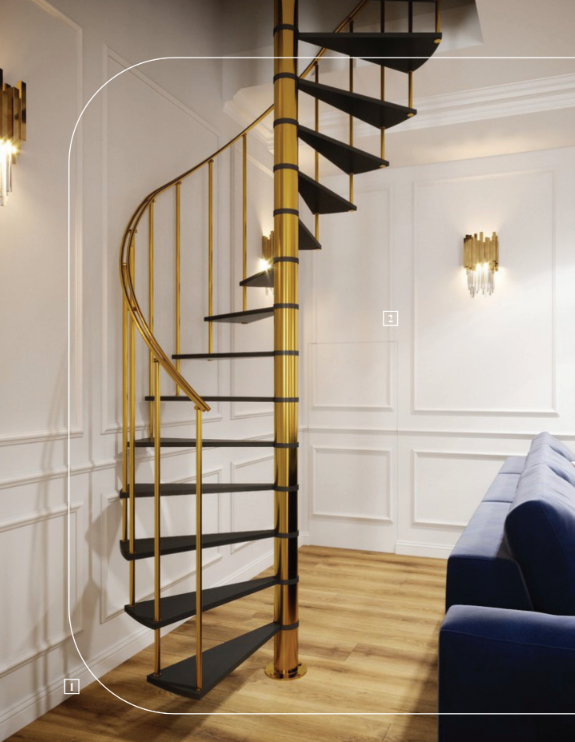
Vertical picture frame mouldings have the greatest effect in visually heightening the interior.
This is because there are few horizontal cut-outs that would visually shorten the room.
They are perfect for interiors with low ceilings and also when you want to go for
total minimalism.
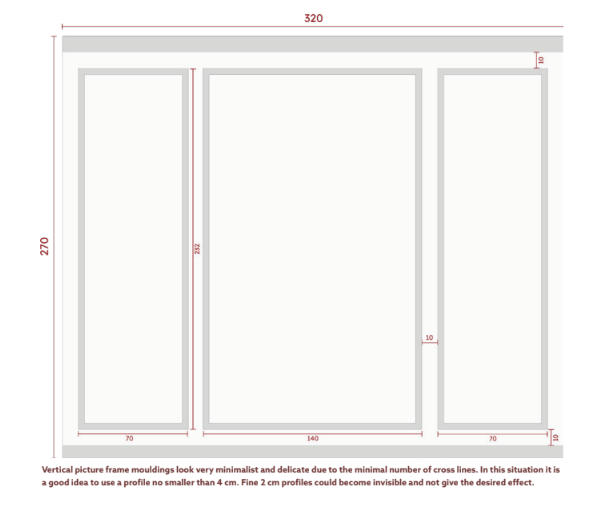
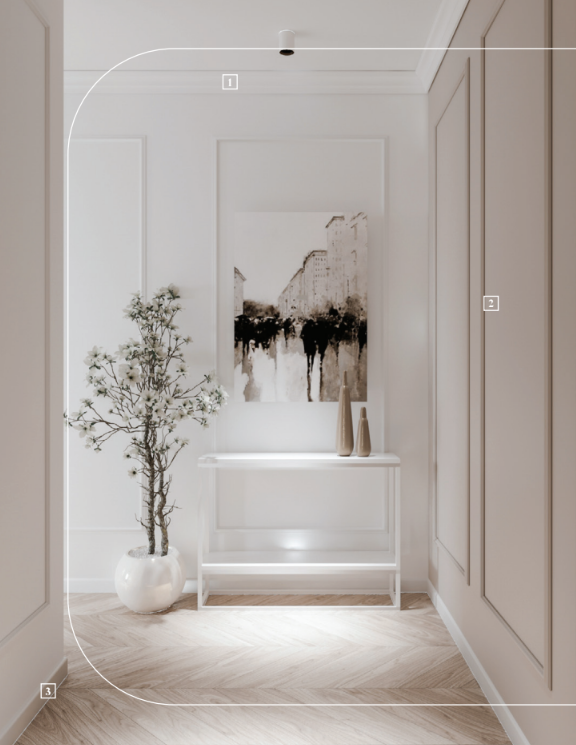
Ceiling decorations
Ceiling decorations are another important element of the Modern Classic style.
Cornice mouldings are perfect for creating a smooth transition between planes by filling in
the space at the top of the wall. They provide a sense of closure to the composition.
In the Modern Classic style, mouldings with a delicate, decorative millwork are perfect.
Completely plain designs would be too modern, and richly decorated profiles are better
suited to other interior styles, which we are going to discuss later!
So which mouldings are worth considering? Bear in mind that very high cornice
mouldings (around 15 cm and above) will only look good in really tall rooms – in tall
detached houses or tenement houses.
For standard interiors, choose medium-height mould-ings – around 8-12 cm.
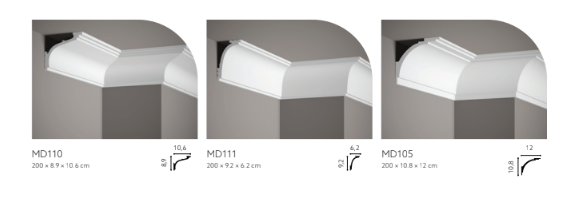
Skirtings
Skirting boards are essential for all types of flooring that require expansion joints. An
expansion joint is nothing more than a small gap (usually 10 mm) against the wall to allow
the floor to move freely. This prevents the floor, which may shrink or swell due to
temperature changes, from buckling against the wall. Expansion joints are used with laminate,
vinyl, natural wood or any other flooring that is sensitive to changes in temperature and
humidity. Only ceramic tiles or epoxy flooring do not require skirting boards as they are sealed
with grout. Skirting boards are therefore essential to hide the unsightly gap created when
the floor is laid.
Skirting boards come in many different heights – from 18 mm up to 250 mm! The choice
therefore depends not only on the visual effect we want to achieve, but also on the
function of the skirting boards in the interior.
The following size ranges are assumed:
18–50 mm -> low skirting boards
50–120 mm -> medium skirting boards
120–180 mm -> high skirting boards
180–200 mm -> very high skirting boards
Minimalist quarter round whose only function is to cover the expansion joint
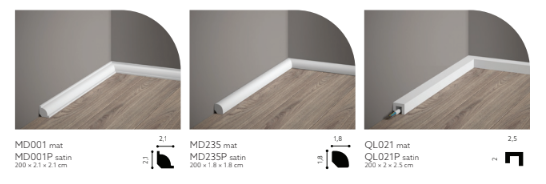
Medium skirting boards for standard-height rooms
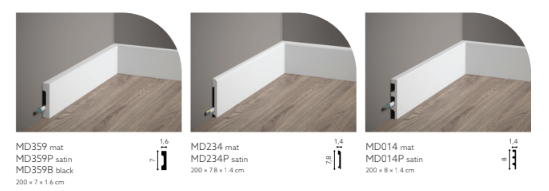
Skirting boards with simple designs and slightly larger dimensions
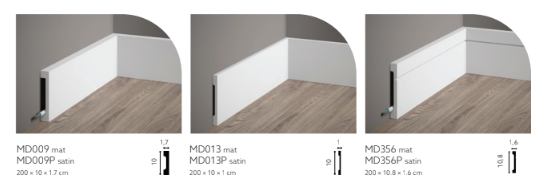
Modern skirting boards
